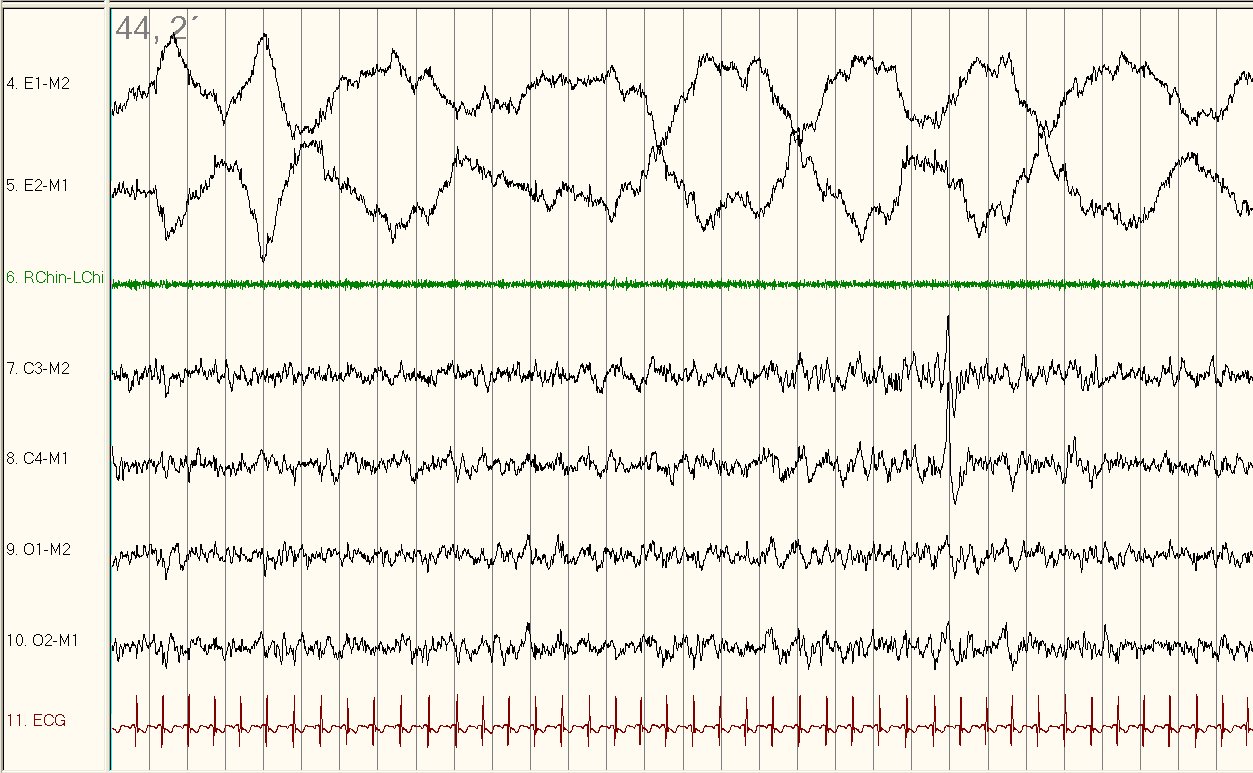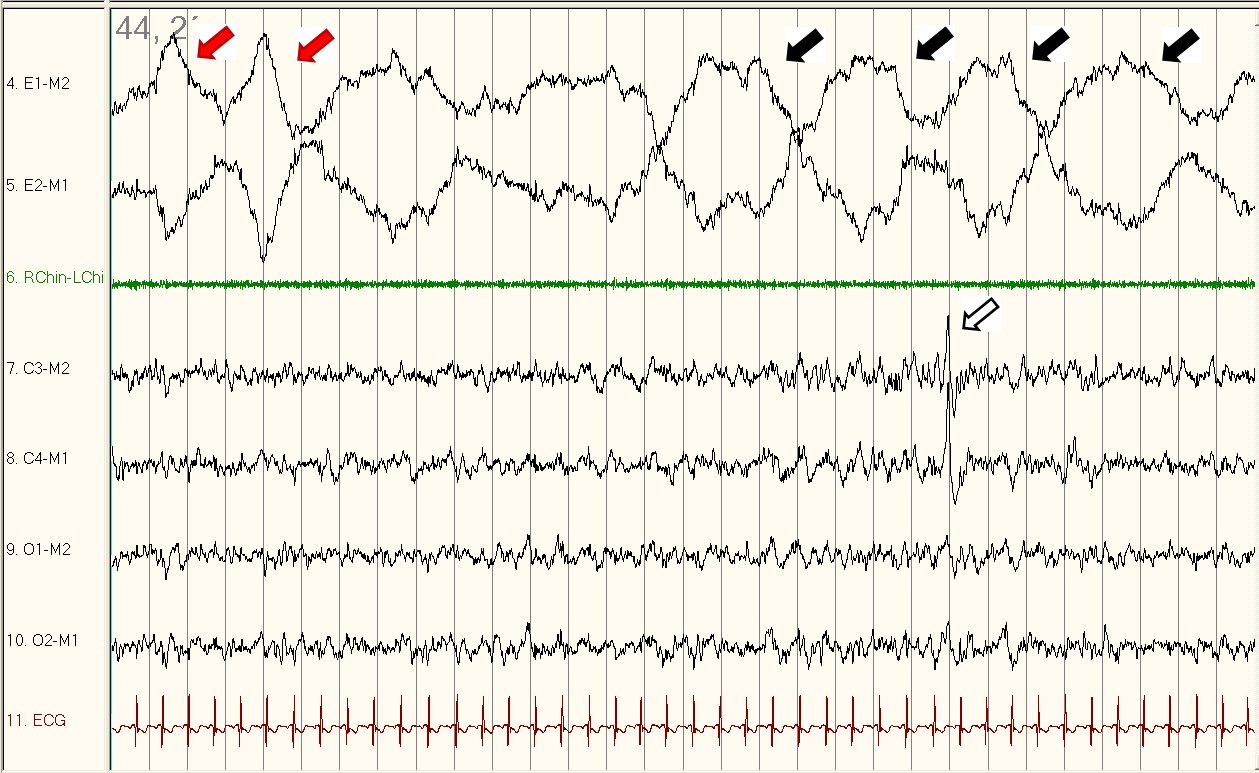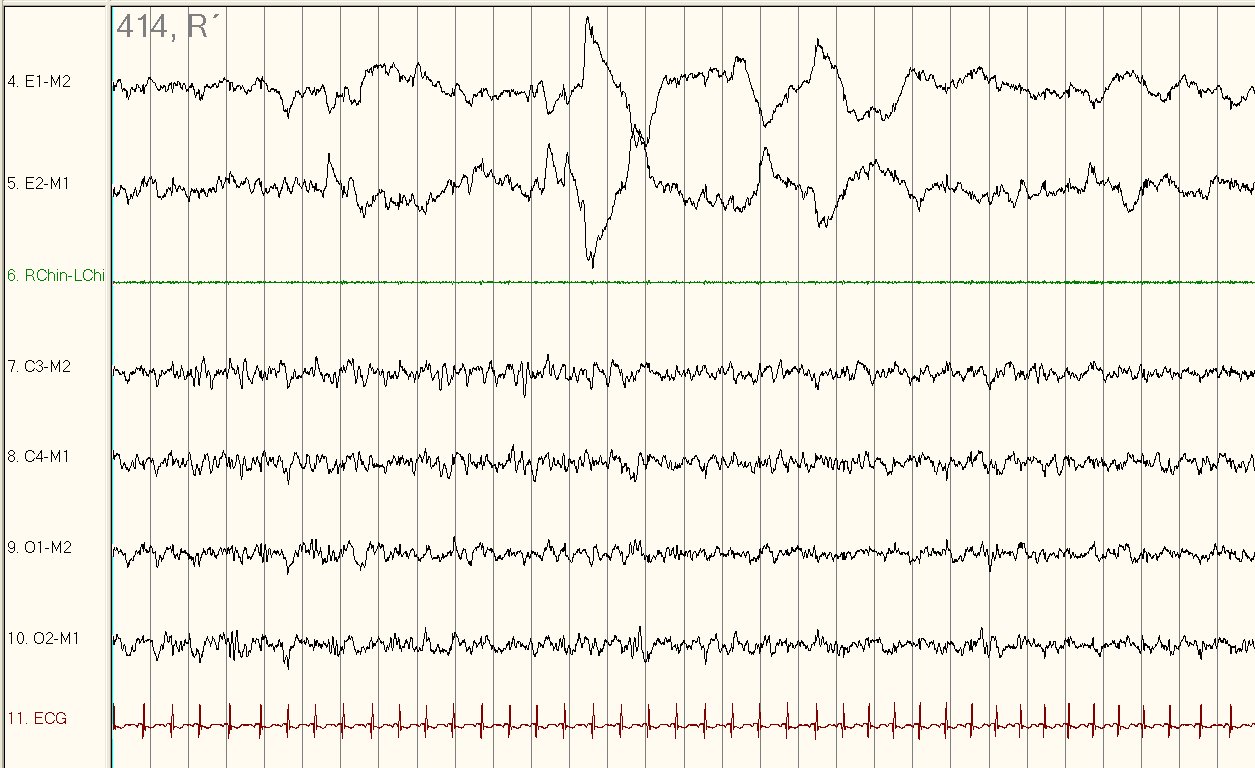Contributed by Abdul Hamid Alraiyes MD, Prudhvi Karumanchi MD, and Sanjay R. Patel MD, MS Division of Pulmonary, Critical Care and Sleep Medicine, University Hospitals Case Medical Center and Case Western Reserve University
A 12 year old boy with history of depression and obesity was referred for an overnight sleep study to assess for sleep apnea. A representative 30-second epoch of the sleep study is presented below. What medication is this patient likely taking?
Figure 1
Figure 1 displays a 30-second tracing of stage N2 sleep with two rapid eye movements (red arrow) and a run of slow rolling eye movements (black arrows) on the electrooculographic (EOG) channel consistent with the use of Fluoxetine or another selective serotonin reuptake inhibitor (SSRI). Note that despite the rapid eye movements, the K complex (white arrow) seen on electroencephalogram (EEG) as well as the presence of muscle tone on chin electromyogram (EMG) indicates the eye movements are not part of stage REM sleep. As a comparison, Figure 2 provides a representative example of normal REM sleep in this patient with muscle atonia on chin EMG.
The common occurrence of slow-rolling eye movements during non-rapid eye movement (NREM) sleep in patients taking Fluoxetine has led to this finding being referred to as “Prozac Eyes” [1]. The oculomotor movements in patients on Fluoxetine are accompanied by an increase in myoclonic activity[2]. The eye movements occur during all stages of NREM sleep and can occur with other SSRIs, such as Paroxetine, Sertraline, and Citalopram. In one study, 36% of patients taking an SSRI were found to have abnormal eye movements during NREM Sleep [4]. The eye movements are thought to be due to a potentiation of serotonergic neurons found in the pontine raphe nuclei [3], those neurons normally inhibit brainstem "omnipause neurons", which, in turn, inhibit saccadic eye movements. Thus, the result is a disinhibited release of saccades [4]. This finding may persist after cessation of SSRI use. In one study, 78% of patients with NREM eye movements were taking an SSRI at the time of the study and an additional 6% had taken an SSRI in the past [4]. NREM eye movements may also occur, though at a much lower prevalence, in individuals using other classes of antidepressants, neuroleptic agents, and benzodiazepines [5]. The presence of NREM eye movements has not been associated with any symptomatology.
References
- Armitage, R., G. Emslie, and J. Rintelmann, The effect of fluoxetine on sleep EEG in childhood depression: a preliminary report. Neuropsychopharmacology, 1997. 17(4): p. 241-5.
- Armitage, R., M. Trivedi, and A.J. Rush, Fluoxetine and oculomotor activity during sleep in depressed patients. Neuropsychopharmacology, 1995. 12(2): p. 159-65.
- Ashikawa, H., N. Furuya, and T. Yabe, Effects of serotonin, GABA and glycine on the activity of pause neurons during vestibular nystagmus in the cat. Acta Otolaryngol, 1991. 111(6): p. 999-1005.
- Schenck, C.H., et al., Prominent eye movements during NREM sleep and REM sleep behavior disorder associated with fluoxetine treatment of depression and obsessive-compulsive disorder. Sleep, 1992. 15(3): p. 226-35.
- Geyer, J.D., et al., Antidepressant medications, neuroleptics, and prominent eye movements during NREM sleep. J Clin Neurophysiol, 2009. 26(1): p. 39-44.






